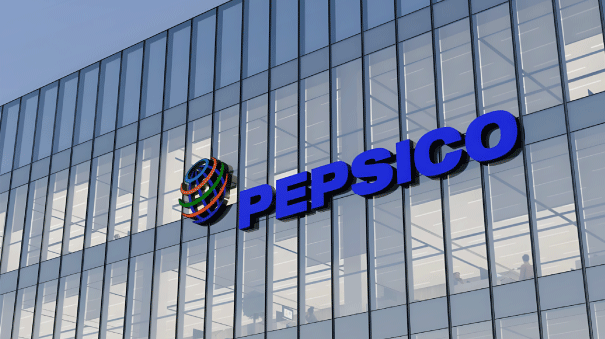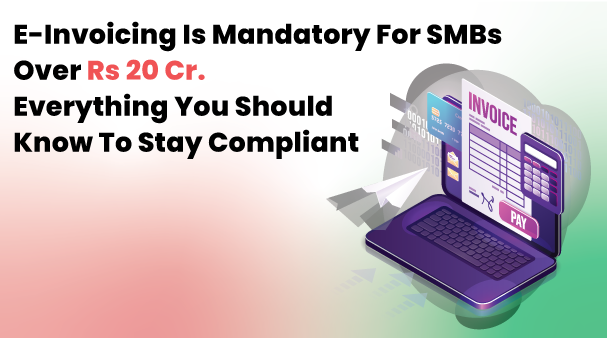The GST council has decided to implement E-Invoicing for better and more effective regulation. It has become mandatory for SMBs with a turnover of more than 20 Crore to submit the standard generated invoice at common GST portals. This article is a comprehensive guide to E-Invoicing with detailed information on several aspects of E-Invoice applicability under GST.
What is E-invoicing under GST? What is the need for E-invoicing?
The E-way bill generation was established to generate regular revenue slips from several transporters.
E-Invoice is an authorization system to monitor and ensure the authentication of B2B invoices electronically by GSTN on the common GST portal for further use.
The E-Invoice system includes generating an identification number that will be issued for every invoice filed on the common GST portal. The invoice registration portal issues this identification number, and all the invoice information is then shared to the GST portal and E-way bill portal using real-time transfer. This Information sharing of invoices saves the manual data entry for GSTR-1 return filing.
E-Invoicing is helpful to keep a managed record with authentication on B2B invoices. The E-Invoicing system functions with simultaneous sharing of details for seamless further information in GSTR- 1 Return Filing.
There are several reasons why E-invoicing was a much-needed thing. Some of them are given below:
● Save 40% time on manual data filing
● Auto-Populate GSTR Return forms
● Seamless automation with any ERP software
Mandatory E-Invoicing for taxpayers exceeding a turnover of INR 20 crores from April 01, 2022:
The e-invoicing system now applies to more businesses via the CBIC’s CGST notification 01/2022 dated 24th February 2022. Indian businesses with an annual aggregate turnover of more than Rs.20 crore up to Rs.50 crore, as calculated in any preceding financial year from 2017-18 up to 2021-22, must begin generating e-invoices from 1st April 2022.
Is E-Invoicing mandatory in India?
E-Invoice is a new way to manage and promote transport with an enhanced system for verification. There is no mandatory information about the verification, as the government limits the transaction value to a minimum of 20 crores. In contrast, projects are sanctioned already to meet the transport with E-Invoice Applicability Under GST.
How to generate an E-way bill?
To generate an E-way bill, you just need to submit the standard generated invoice in the common E-Invoice portal to share the filled information further with the forms of GSTR 1 and other stages. The government had placed a threshold for the company’s annual turnover to Benefits of E-Invoicing and E-way bill systems in India:the E-Invoice requirements.
Wepsol E-Invoicing and E-way bill software workflow
With technological involvement, the trade sector is getting smarter and more progressive. With features like automated GST E-Invoice software, the job of E-Invoicing under GST has become a thing. The market is flooded with several software that ensures mismatch-free GST returns filing with proper formulation, but the Wepsol E-Invoicing promises excellent bill development and auto-plotting.
Benefits of E-Invoicing and E-way bill systems in India:
Businesses, especially SMBs, share the below-mentioned benefits of E-Invoice by GSTIN:
No Mismatch
The problem with manual data entry is the mismatch. You get considerable mismatches due to manual data entry, which is error-prone. E-Invoice solves data reconciliation issues and ensures a mismatch-free entry.
Interoperability
Different software work with interoperability to ensure reduced errors and enable the user to check or verify the entries on other applications. This often sweetens new SMBs to get used to the accuracy of these softwares.
Auto-filling
Automation helps auto-fill several places in the GSTR forms, saving time and manual data entry. The auto-filling feature is also known as auto-populating, and it helps the taxpayer by saving a lot of time and eliminating mismatches and other errors.
Informed tax authorities and Real-time tracking
The transaction-level information keeps the audit and tax authorities in a continuous loop about the information. This eased access of transactions to tax authorities and provided them with the data they needed.
Reduction in Tax leakage
E-Invoicing ensures that there is no tax leakage and fraudulent activities in taxation. The concept of E-Invoicing is designed to support a transparent tax filing with reduced leakage and fraud.
Invoicing and E-Way Bills
With the recent amendments, the E-way bill is now interlinked with E-Invoicing. This eliminates the chance of any fake invoices or tax fraud with seamless communication between the two.
Green Initiative of online filing
With all the automation in Industry, E-Invoices have made it easier and environmentally friendly with the bare minimum of paper in the taxation process. Along with the green initiative, it helps achieve rapid and robust data entry.
Say NO! to multiple formats
With the concept of E-Invoices in play, the need for multiple formats while filing different stages of GSTR is now eliminated from the scenario. Now it is one format for the whole taxation process.
Why is E-invoicing in Focus Today & How will it Benefit your SMBs / Business?
E-Invoicing has brought a change for SMBs with easy GST filing based on their E-Invoicing Under GST Turnover Limit. The government has mandated SMBs with an annual turnover of 20 Crore to file tax returns through E-Invoices to minimize the law scale tax fraud. This change will result in rapid development in the SMBs industry with transparent and easy E-invoice management with various software.
The power of automation brings you an error-free E-Invoice filing. Wepsol GST e-invoicing has got automated GST E-invoicing software to help you eliminate all basic and commonly occurring errors like data mismatch with a pitch-perfect entry and other jobs. This automation in E-invoicing has become a trend nowadays, welcoming SMBs to explore the services of automated GST E-invoice software.

